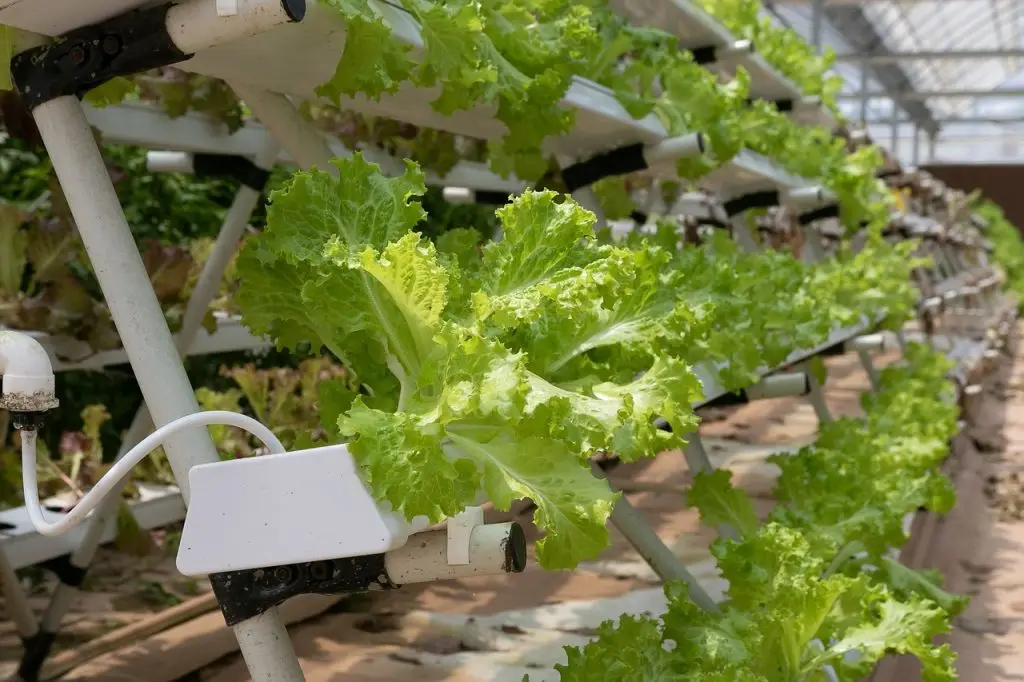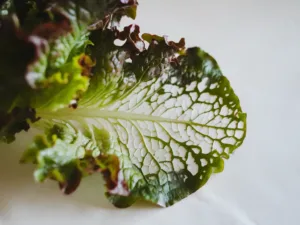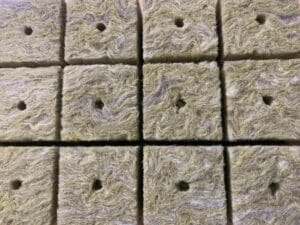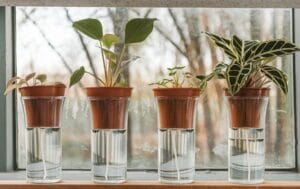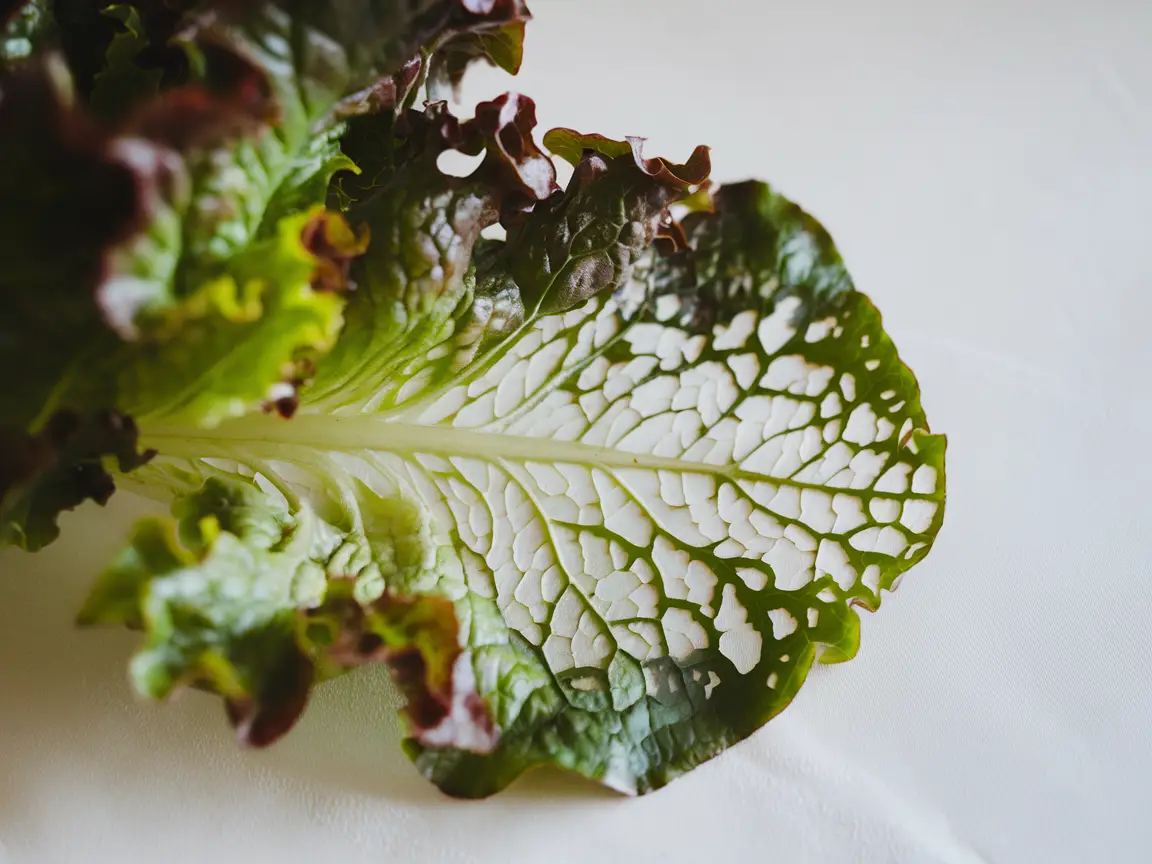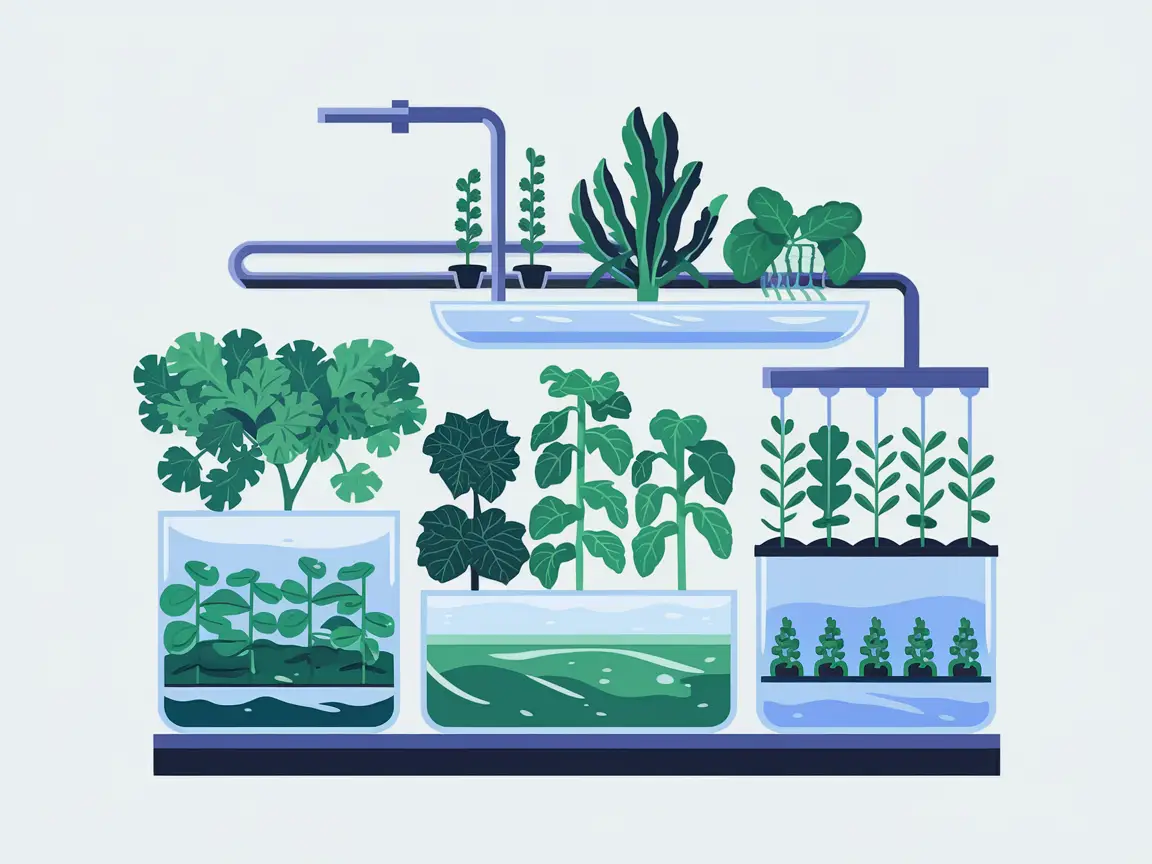What is the NFT-system?
The NFT-system (short for Nutrient Film Technique) is a modern hydroponic system that allows plants to grow without soil. Instead, a thin layer of nutrient solution continuously flows over the roots of the plants. The plants are held in slightly sloped channels or pipes through which the nutrient solution circulates. This constant flow supplies the roots with water, essential nutrients, and oxygen. As a result, plants grow faster and often healthier than in soil.
The NFT-system is especially popular with gardeners and farmers because it is easy to set up and offers a lot of efficiency. But how does it actually work?
How does an NFT-system work?
An NFT-system needs only a few key components to function. Here’s an overview:
- The reservoir: This is where the nutrient solution, that is, the water with all the essential minerals and nutrients, is stored. The reservoir should be opaque to prevent algae growth.
- The pump: The pump transports the nutrient solution from the reservoir to the channels or pipes. There, the solution flows back into the reservoir through gravity, creating a cycle.
- Channels or pipes: In the channels are the plants, which are held in small net pots. The nutrient solution flows as a thin film past the roots.
- Hoses and connections: These connect the pump to the channels and ensure that the nutrient solution is distributed evenly.
This is how the system works in detail: The pump turns on and directs the nutrient solution to the upper ends of the channels. From there, the solution flows slowly and evenly down, moistening the roots. After the nutrient solution has reached the end of the channel, it is returned to the reservoir and can be reused.
Advantages of the NFT-system
The NFT-system has several big advantages over growing plants in soil or other hydroponic methods:
- Water and nutrient savings: Since the nutrient solution circulates, water is used more efficiently. This saves costs and resources.
- Fast plant growth: With the continuous contact of the roots with the nutrient solution and steady oxygen supply, plants often grow faster.
- Low space requirement: The NFT-system requires little space and is suitable for vertical growing areas.
- Fewer pests and diseases: Since no soil is used, typical soil diseases occur less frequently.
Possible disadvantages and challenges
Despite the many advantages, there are also some challenges with the NFT-system that you should be aware of:
- Dependence on electricity: The system requires a pump that does not work without power. A power outage could lead to plants being deprived of nutrients.
- Clogs: Buildup or root growth can clog the channels or hoses. Regular checks and cleaning are important.
- Not all plants are suitable: Some plant species thrive better than others. For example, lettuce, herbs, and strawberries work excellently with the NFT-system, while larger plants with deep roots are less suitable.
The NFT-system for home: DIY guide
Building an NFT-system yourself is easier than you might think. Here’s a step-by-step guide:
Materials:
- A pump that can move the nutrient solution.
- A reservoir that holds the nutrient solution (ideally opaque).
- Slanted channels or pipes.
- Flexible hoses for fluid flow.
- Net pots that hold the plants.
- A hydroponic nutrient solution with all essential nutrients.
Step-by-step guide:
- Prepare the reservoir: Place the reservoir in an easily accessible location. Make sure it is protected from direct sunlight.
- Install the channels: Secure the channels at a slight angle above the reservoir so that the nutrient solution can flow down by gravity.
- Connect the pump: Connect the pump to the hoses leading to the channel. This way, the nutrient solution can be directed from the pump into the channels.
- Place plants in net pots: Set the plants in net pots and place them in the channels. The roots should touch the channels so they can absorb the nutrients.
- Fill with nutrient solution: Fill the reservoir with a prepared nutrient solution that contains all essential minerals and nutrients for plant growth.
- Test the system: Turn on the pump and check if the nutrient solution flows evenly through the channels.
Care and maintenance of your NFT-system
To ensure your NFT-system functions optimally and produces healthy plants, regular checks are necessary. Here are some tips:
- Monitor water quality: The nutrient solution should be checked regularly. A clear solution without impurities promotes growth.
- Temperature control: The temperature of the nutrient solution should ideally be between 18-24°C.
- Monitor pH levels: The pH level of the nutrient solution should be between 5.5 and 6.5. You can check this with a pH meter.
- Avoid clogs: Regularly inspect the hoses and channels to ensure they are not blocked.
- Plant care: Check your plants for pests or diseases and remove dead leaves and roots.
Common problems and how to solve them
Algae growth
- Exclude light: Use dark or opaque containers and reservoirs and cover any areas exposed to light, e.g., with black plastic or dark tape. This prevents algae growth.[3]
- Clean regularly: Clean the channels, planting pots, and everything else thoroughly after each harvest. Tools like a special brush or a pressure washer can help.
- Maintain the system: Turn off the water flow to unused areas, cover unused planting holes, and ensure good ventilation while covering the tank to prevent light from getting in.
- Chemical solutions: If necessary, you can use diluted hydrogen peroxide (approx. 3%) or other gentle agents like copper sulfate, but be careful not to harm the roots of the plants.[2]
- Water circulation and filters: Ensure good water movement and use filters to reduce organic material. You can also use special filters like carbon or sand filters to remove floating algae.
Nutrient deficiency
- Regularly check nutrients: Frequently check the nutrient concentration to ensure the plants are optimally supplied.
- Add fresh nutrients: If necessary, replenish fresh nutrients. It can also be sensible to change all the water in the tank every 4-6 weeks to restore balance.[1]
pH fluctuations
- Monitor pH level: Regularly measure the pH level of the nutrient solution. The optimal range is 5.5 to 6.5 – this helps avoid algae growth and supports the plants.[3]
- Adjust pH level: Use pH-reducing agents when the level is too high. There are many safe products specifically for hydroponics that are easy to use.[3]
Pest infestations
- Check regularly: Frequently inspect the plants for pest infestations.
- Remove manually: If possible, remove pests by hand.
- Biological control: Use natural agents like beneficial insects or biological pest control such as neem oil.
No products found.
Clogs
- Clean regularly: Keep channels and hoses clean to prevent clogs.
- Check pump: Regularly check if the pump is functioning properly and circulating water correctly.
- Keep filters clean: Regularly clean or replace filters to ensure optimal water flow.[1]
By following these tips, you can easily manage many typical problems in an NFT hydroponic system.
Why the NFT-system is so popular for hydroponics
The NFT-system is particularly popular among gardeners and commercial growers due to its efficiency and ease of use. It offers a fantastic way to grow plants in a small space while saving water, time, and resources. Whether you want fresh herbs for your kitchen or larger quantities of lettuce – the NFT-system makes it possible.
Operating an NFT-system is an exciting and rewarding way to cultivate plants efficiently and sustainably. With the right care and regular checks, you can grow healthy and robust plants while enjoying many of the benefits of hydroponics. Give it a try and discover how easy it is to create your own green oasis with the NFT-system!
Frequently Asked Questions
Here you will find answers to the most commonly asked questions about the Nutrient Film Technique:
What do I do in case of a power outage?
In case of a power outage, the nutrient supply may be interrupted. An emergency solution is a battery-operated pump or a generator. Regularly check your system and have a plan ready for such emergencies to minimize damage to your plants.
Which plants are best suited for the Nutrient Film Technique?
Plants with small root systems, such as lettuce, herbs (e.g., basil, cilantro, parsley), and some vegetables like spinach and strawberries are best suited. Avoid large plants like tomatoes or cucumbers, as their roots can become too large.
What is a planting tower and is it suitable as a replacement for the channel system?
A planting tower is a vertical structure that offers multiple levels for growing plants. It is suitable for limited space and can be an alternative to the traditional horizontal channel system. Planting towers are particularly efficient in space utilization and can also be operated with NFT technique.
Pipes or channels, which option should I choose?
Both options have their advantages. Channels offer more space for the roots and better oxygen supply, while pipes are more compact and suitable for smaller systems. The choice depends on your specific requirements and space conditions.
Can I use the NFT outdoors?
Yes, an NFT system can be used outdoors. Make sure to protect the nutrient solution from extreme temperatures and to shield the system from direct sunlight and heavy rain. A cover or greenhouse can be helpful.

